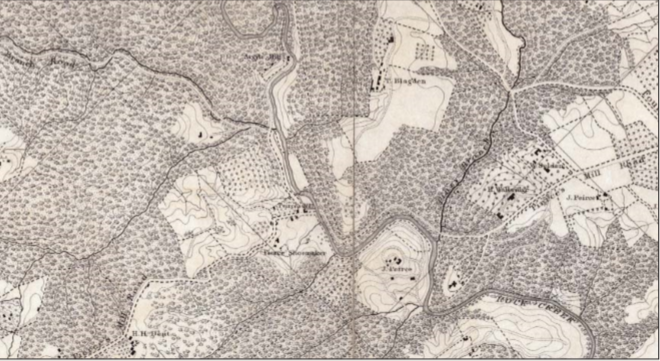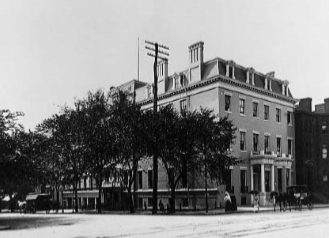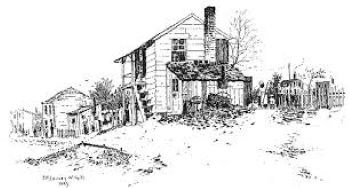Part of a series of articles titled The Sarah Whitby Site and African-American History.
Next: The Sarah Whitby Site
Article
Sarah Whitby was an African American woman whose family lived in Rock Creek Park between 1870 and 1900. The remains of her house were discovered by archeologists in 2005. Excavations of the Whitby house cellar, and documentary research done as part of the same project, have opened a window into Washington's African American past.

NPS
Today Rock Creek Park is a wooded refuge within the crowded city of Washington, a place of recreation and relaxation. It is easy to imagine that this landscape is ancient, these trees a remnant of the primeval forest. But the park has a rich human history stretching back 10,000 years. When the park was established in 1892, the land was not vacant, and dozens of people lived within its boundaries. The residents of the future park included property-owning farmers, tenants, and even a few pioneering suburbanites. The most prominent residents were the Shoemaker family, which owned Peirce Mill and took their fight against the Park Commission to the United States Supreme Court. Among the other residents were several African American tenants. During a four-year archeological and historical study of the park, completed in 2007, these unknown African American families were a major focus of the research.
Many records were made when Rock Creek Park was established that help us learn about the people who lived there. Detailed descriptions were made of the properties purchased for the park, including the value of the buildings on them. Lists were also made of the tenants who leased land in the park. A few of the houses on land bought for the park were torn down within a few years, but many survived and were rented out until at least 1900. By comparing the lists of owners and tenants with the U.S. Census, we can discover the ethnic identity and occupations of the park's residents.
The census shows that the tenant population of the park was racially diverse. Samuel Dominess, Louis Savoy, Fannie Bouldin, Charles and Jane Dickson, Elijah and Sarah Whitby, and Hannah Williams were African Americans. Hugh McMahon was an immigrant from Ireland and James Fegan was the son of Irish immigrants, while Mason Anderson and David Duley were white men born in the District. One segment of the 1880 census could represent a line of tenant houses along Blagden Road. It lists, in order, Robert Cross, Augustus Johnson, and Thomas Sharp, all Black, and then Hugh McMahon and Patrick Ryan, both Irish.

NPS
After the Civil War, many thousands of African Americans left the old Confederacy and moved north to Washington and other cities. Black Washington was booming in those years. The Black population of the city grew from around 14,000 in 1860 to 87,000 in 1900, more than half of them immigrants from the South. Many African Americans were able to move up the economic ladder, entering skilled trades, founding businesses, and owning their own homes. A few even got rich, like James Wormley, who built his famous hotel at 15th and H streets in 1871. But most African Americans in Washington remained relatively poor, their economic options limited by racism. Thousands of women worked as domestic servants, many men as laborers.

NPS
Many of Washington's new African American residents settled around the fringes of the city, including the heights overlooking Rock Creek. We have a good idea of the kind of houses occupied by Black migrants to Washington in the 1880s because of a series of remarkable drawings by DeLancey Gill. Gill was an artist with the Smithsonian's Bureau of Ethnography, and his professional specialty was drawing Hopi pueblos, Navaho hogans, and other Indian structures from the southwest. But while he was in Washington, Gill made at least a dozen studies of the homes occupied by Black migrants.
Part of a series of articles titled The Sarah Whitby Site and African-American History.
Next: The Sarah Whitby Site
Last updated: October 5, 2022